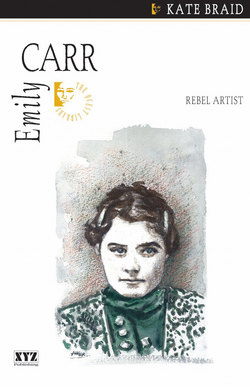Читать книгу Emily Carr - Kate Braid - Страница 9
На сайте Литреса книга снята с продажи.
ОглавлениеPreface
Language has changed since Emily Carr’s time. For example, in Emily’s day First Nations people were called “Indians,” and their own names and place names were arbitrarily anglicized. The large set of islands north of Vancouver Island that are today called Haida Gwaii were then called the “Queen Charlotte Islands”; the Kwakwaka’wakw people were referred to as “Kwakiutl”; the Nuu-chah-nulth as “Nootka”; and so on. For gender, the pronoun “he” was used as a neutral word to refer to both men and women.
When quoting her, I repeat Emily’s own vocabulary, which will at times sound old-fashioned to modern ears. In the rest of the text, I have tried to remain true to current spelling and names. However, in the present context of rapidly shifting linguistics, there may be inadvertent errors; if so, I would appreciate being informed of them in order to make corrections to future editions.
All of the quotations in this work are taken from Emily Carr’s books. However, in her work she frequently distorts (or misremembers) facts, especially her age. So, for example, when her mother died she says she was twelve when she was actually fourteen. When she went to San Francisco she says she was “almost sixteen” when she was almost nineteen, and so on.
She also changes people’s names so that, for example, her suitor, Mayo Paddon, becomes Martyn. I have here used her actual age and the real names of people connected with her, as confirmed by her biographers.
Emily Carr was an excellent and prolific writer about her own life. I have relied heavily on her journals and books for details in this manuscript, particularly in Chapter 1, in order to keep as close as possible to Emily’s experience of important events in her life.
Unless otherwise noted, all quotations are from Emily Carr’s own writings as reprinted in The Emily Carr Omnibus (1993. Introduction by Doris Shadbolt). Sincere thanks to the publishers of The Emily Carr Omnibus: Douglas & McIntyre (Vancouver/Toronto) and the University of Washington Press (Seattle). Also thanks to Stoddart Publishing for their confirmation that Emily Carr’s work is in the public domain.
Thanks for their assistance to the folk at B.C. Archives and the Vancouver Art Gallery; to Jan Ross at Emily Carr House in Victoria, B.C.; Martha Black at the Royal British Columbia Museum; Miriam Clavir, Marilyn Dumont, and Jada Pape. A warm thank you to Rhonda Bailey and Lynne Bowen.
I am particularly grateful for the excellent and detailed biographies of Emily Carr by Maria Tippett and Paula Blanchard, which I have used as my sources for factual material. Thank you also to Maria Tippett for checking the final manuscript for accuracy.
Mostly thanks, once again, to Emily.
